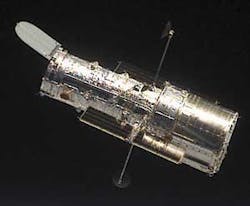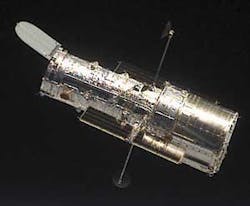NASA’s Hubble looks for possible moon resources
NASA is using the unique optical capabilities of the Hubble Space Telescope for a new class of scientific observations of the Earth’s Moon.
Hubble’s resolution and sensitivity to ultraviolet light have enabled the telescope to search for important oxygen-bearing minerals on the moon. Because the moon does not have a breathable atmosphere, minerals such as ilmenite (titanium and iron oxide) can be critical for a sustained human lunar presence. Ilmenite is a potential source of oxygen for breathing or to power rockets.
The new Hubble observations are the first high-resolution, ultraviolet images ever acquired of the Moon. The images provide scientists with a new tool to study mineral variations within the lunar crust. Hubble’s Advanced Camera for Surveys snapped ultraviolet and visible light images of known geologically diverse areas on the side of the Moon nearest Earth.
“These observations of the moon have been a challenging and highly successful technological achievement for NASA and the Hubble team, since the telescope was not originally designed for lunar observations,” says Jennifer Wiseman, program scientist for the Hubble at NASA Headquarters.

